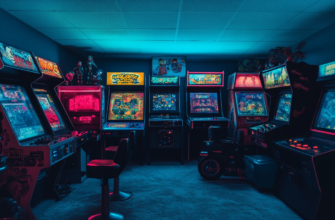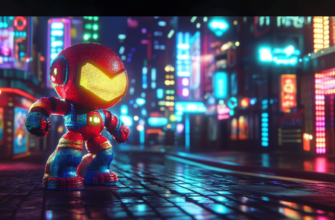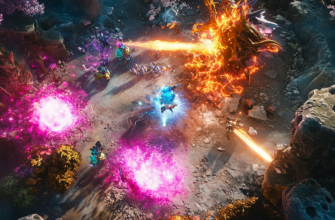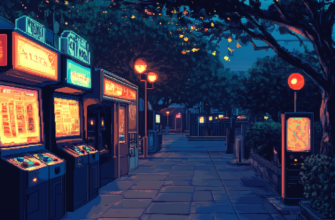- Understanding why gamers buy in-game items
- The psychology behind in-game purchases
- Reasons why gamers spend on in-game items
- Cosmetic items enhance personalization
- Pay-to-win mechanics
- Saving time and effort
- Supporting the developers
- Exclusive, limited-time offers and events
- Practical tips before making in-game purchases
- Conclusion: the balance between fun and spending
Understanding why gamers buy in-game items
Hey, fellow gamers! Let’s have an honest chat about something most of us have faced at one point or another—in-game purchases. Whether it’s cosmetics, power-ups, expansion packs, or utilities, we’ve all been there, staring at the buy button and contemplating whether we need that sword skin or extra loot box.
Buying in-game items has become a massive part of gaming culture, with many players choosing to shell out real cash to enhance their experience. But why exactly do people do it? What is it that drives someone to make these sometimes impulsive purchases?
Let’s break this down and figure out the key reasons why in-game purchases hold such strong appeal.
The psychology behind in-game purchases
Before diving into the specific reasons why people buy in-game items, it’s important to understand some of the basic psychological instincts that these purchases tend to trigger. Game developers often tap into various motivational triggers that we might not always be aware of:
- Instant gratification: We live in a world where people want things faster. In some games, grinding for an item through gameplay takes a lot of time. By purchasing it, you get instant access (and that amazing feeling of winning).
- Social comparison: Seeing other players with exclusive items or skins makes us want them too. It’s kind of like keeping up with the Joneses but in the virtual world!
- Fear of missing out (FOMO): A limited-time offer can trigger the fear of missing out. If something is exclusive or available for a short period, there’s an extra push to click ‘buy’!
- Game immersion: Buying items that fit the theme make the game more engaging, personal, or immersive.
With these motivators in mind, let’s explore the most common and relatable reasons gamers buy in-game items.
Reasons why gamers spend on in-game items
-
-
Cosmetic items enhance personalization
-
One major reason gamers spend money on in-game purchases is for customization. Skins, outfits, weapon camos, and mounts allow you to stand out from other players by giving your character and items a unique look. But, here’s where it gets interesting—it’s not just about being unique; it’s expressing yourself. Sometimes, that sweet new armor set or the dragon mount you ride is more than just cosmetic. It represents your personality or aligns with the narrative experience you want to have.
Players pay real money for these cosmetic looks to show off to others, either in multiplayer matches or social lobbies. Have you ever scrolled through your inventory and felt that your character looks too basic compared to others? That’s where customization hooks you. Through cosmetic purchases, you can make a statement without altering gameplay. Whether it’s that rare gold-plated gun skin in CS:GO or a new Fortnite dance, customizing your experience within the game is hard to resist.
-
-
Pay-to-win mechanics
-
It’s often controversial, but many people buy in-game items to improve their chances of winning. Games like mobile RPGs and shooter games sometimes offer power-ups, items, or equipment that give you a competitive edge. Sometimes grinding for upgrades can be grueling, and if you’re serious about climbing the ranks, paying for that limited edition weapon or extra XP boost can offer a shortcut.
It’s a slippery slope, though. Some players argue it breaks the balance of free gameplay, while others consider it part of the strategic choices within the game.
-
-
Saving time and effort
-
Let’s be real—some games can be grindy as hell. Whether it’s farming for materials in RPGs or slamming a hundred matches to earn enough points to unlock cool stuff, not everyone has that kind of time, especially if you have a life outside of gaming! Spending money allows players to skip these time-sinks and keep pace with those who may have more time to play.
The bottom line? Time is a commodity, and when time is more valuable to someone than money, they’re willing to pay for progression.
-
-
Supporting the developers
-
Another reason players purchase in-game items is to support the developers behind games they love. Free-to-play games like Path of Exile, Genshin Impact, and Fortnite are often dependent on the revenue made from microtransactions. So, a lot of players make purchases because they genuinely appreciate the game and want to support its continued growth.
This sense of community loyalty and backing from fans can drive players to spend on cosmetics, battle passes, or expansions. Gamers like to feel they are contributing to the ongoing success of the game, helping pay for server upkeep, future updates, and new content—even if all they’re unlocking is a fancier outfit or extra packs.
-
-
Exclusive, limited-time offers and events
-
If you’ve ever caught yourself rushing to buy an exclusive in-game item because it’s only available for a short time, you’re not alone. Developers deliberately create scarcity by featuring exclusive offers for a limited period to increase demand. This taps into the ever-looming FOMO (fear of missing out) every player has experienced. The idea of missing out on something rare or never being able to buy it again is enough to get wallets opening.
Games often roll out holiday events, limited skins, or anniversary celebrations with rare items that won’t be available later. And hey, if you’ve missed it once, the regret can push you to act next time.
Practical tips before making in-game purchases
Okay, now that we’ve revealed the reasons why people flush their wallets for in-game items, let me give you a few tips to help manage those moments of impulsiveness.
- Set a budget: You should have a clear idea of how much money you’re ready to spend on a game each month. Only spend what you’re comfortable with, and stop once you hit that limit. It’s easy to go overboard.
- Avoid impulsive buys: Take a moment to think about if you really *need* that item. Is that exclusive outfit really worth the cost—or can you live without it?
- Consider value for money: If you’re spending money, make sure you’re getting something that adds genuine value to your gaming experience. Investigate what’s behind loot boxes—you don’t want to gamble money on something you might not even care for.
- Support games you enjoy: If you’re making purchases to support developers, make sure you’re doing it because you enjoy the game, not because you feel pressured by peers or game sales tactics.
Conclusion: the balance between fun and spending
In-game purchases are ingrained in the gaming world as it continues to evolve. They tap into our emotions and desires, whether they are competitive needs, authentic self-expression, or supporting our favorite developers. While it’s normal to indulge here and there, it’s essential to make sure purchases add genuine value and don’t simply play into your impulsiveness or fear of missing out.
What’s your stance on in-game purchases? Do you find yourself tempted often, or are you usually against it? Drop a comment and let’s have a chat! But till then—game smart and spend wisely.

















